Atmospheric Conditions for Uplift and Dust Transport in the Latitudinal 10° North–20° North Band in Africa
Abstract
1. Introduction
2. Materials and Methods
3. Results
4. Discussion
5. Conclusions
Author Contributions
Funding
Institutional Review Board Statement
Informed Consent Statement
Data Availability Statement
Conflicts of Interest
References
- Marticorena, B.; Bergametti, G. Modeling the atmospheric dust cycle. J. Geophys. Res. Atmos. 1995, 100, 16415–16430. [Google Scholar] [CrossRef]
- Schütz, L.; Jaenicke, R.; Pietrek, H. Saharan dust transport over the north atlantic ocean. Geol. Soc. Am. Spec. Pap. 1981, 186, 87–100. [Google Scholar]
- d’Almeida, G.A. On the variability of desert aerosol radiative characteristics. J. Geophys. Res. Atmos. (1984–2012) 1987, 92, 3017–3026. [Google Scholar] [CrossRef]
- Laurent, B.; Marticorena, B.; Bergametti, G.; Léon, J.; Mahowald, N. Modeling mineral dust emissions from the sahara desert using new surface properties and soil database. J. Geophys. Res. Atmos. 2008, 113, D14218. [Google Scholar] [CrossRef]
- Huneeus, N.; Schulz, M.; Balkanski, Y.; Griesfeller, J.; Prospero, J.; Kinne, S.; Bauer, S.; Boucher, O.; Chin, M.; Dentener, F.; et al. Global dust model intercomparison in AeroCom phase I. Atmos. Chem. Phys. 2011, 11, 7781–7816. [Google Scholar] [CrossRef]
- Hassane, B.; Durand, A.; Garba, Z.; Dieppois, B.; Sebag, D.; Rajot, J.-L.; Diedhiou, A.; Ngatcha, B.N.; Traore, A. Can daily meteorological measurement of near-surface wind detect climate changes in the Sahel (SE Niger, 1950e1992)? J. Arid. Environ. 2016, 124, 91–101. [Google Scholar] [CrossRef]
- Touréa, A.; Tidjani, A.; Rajot, J.; Marticorena, B.; Bergametti, G.; Bouet, C.; Ambouta, K.; Garba, Z. Dynamics of wind erosion and impact of vegetation cover and land use in the Sahel: A case study on sandy dunes in southeastern Niger. Catena 2019, 177, 272–285. [Google Scholar]
- Adenira, F.O.; Musa, S.Y.; Johnson, A.O. Statistical Modelling of Atmospheric Mean Temperature in sub-Sahel West Africa. Sci. Afr. 2019, 7, e00254. [Google Scholar]
- Huber, S.; Fensholt, R. Analysis of teleconnections between AVHRR-based sea surface temperature and vegetation productivity in the semi-arid Sahel. Remote Sens. Environ. 2011, 115, 3276–3285. [Google Scholar] [CrossRef]
- Janicot, S. A comparison of Indian and African monsoon variability at different time scales. Comptes Rendus Geosci. 2009, 341, 575–590. [Google Scholar] [CrossRef]
- Dirk, S.; Schütz, L.; Kandler, K.; Ebert, M.; Weinbruch, S. Bulk composition of northern African dust and its source sediments. Earth-Sci. Rev. 2013, 116, 170–194. [Google Scholar]
- Olauson, J. ERA5: The new champion of wind power modelling? Renew. Energy 2018, 126, 322–331. [Google Scholar] [CrossRef]
- Wang, C.; Graham, R.M.; Wang, K.; Gerland, S.; Granskog, M.A. Comparison of ERA5 and ERA-Interim near-surface air temperature, snowfall and precipitation over Arctic sea ice: Effects on sea ice thermodynamics and evolution. Cryosphere 2019, 13, 1661–1679. [Google Scholar] [CrossRef]
- Nouaceur, Z. Sand winds in saharan and sub-saharan africa. Ann. Valahia Univ. Târgovişte Geogr. Ser. 2005, Tome 4-5, 108–118. [Google Scholar]
- Suraud, P. Hydrological Yearbook of France; The Intertropical Front in West Africa: Abuja, Nigeria, 1954. [Google Scholar]
- Fontaine, B.; Roucou, P.; Camara, M.; Vigaud, N.; Konaré, A.; Diedhiou, A.; Janicot, S. Rainfall variability, climate change and regionalization in the African monsoon region. Meteorology 2002, 41–48. [Google Scholar]
- Capot-Rey, R. Recent studies on the climate of North Africa and the Sahara. Ann. Geogr. 1946, 39–48. [Google Scholar] [CrossRef]
- Deme, A.; Gaye, A.T.; Hourdin, F. Climate projections for West Africa. IRD Ed. 2015, 61–87. [Google Scholar]
- Rome, S.; Oueslati, B. Heat waves in the sahel: Definition and main spatio-temporal characteristics (1973–2014). Colloq. Int. Climatol. Assoc. 2016, 345–350. [Google Scholar]
- Tadé, V. Modelling the Spatial and Temporal Variability of Surface Temperature for a Homogeneous Soil with Relief. Ph.D. Thesis, Institut Universitaire des Systèmes Thermiques Industriels, Marseille, France, 2004. [Google Scholar]
- Mahrer, Y. A theoretical study of the effect of soil surface shape upon the soil. Soil Sci. 1982, 6, 381–387. [Google Scholar] [CrossRef]
- Jansson, P.E. Simulation Model for Soil Water and Heat Conduction—Description of Soil Model. Ph.D. Thesis, Department of Soil Science, Uppsala, Sweden, 1998. [Google Scholar]
- Vischel, T.; Thierry, L.; Panthou, G.; Quantin, G.; Rossi, A.; Martinet, M. The return of a wet period in the Sahel: Observations and perspectives. Obs. Prospect. 2015, 43–60. [Google Scholar]
- Sultan, B.; Janicot, S. The west african monsoon dynamics. part ii: The ’preonset’ and ’onset’ of the summer monsoon. J. Clim. 2003, 16, 3407–3427. [Google Scholar] [CrossRef]
- Benjamin, S.; Serge, J.; Philippe, D. Characterization of the diurnal cycle of the west african monsoon around the monsoon onset. J. Clim. 2007, 20, 4014–4032. [Google Scholar]
- Sultan, B.; Labadi, K.; Guégan, J.-F.; Janicot, S. Climate drives the meningitis epidemics onset in west africa. PLoS Med. 2005, 2, e6. [Google Scholar] [CrossRef]
- Caccia, J.-L.; Guenard, V.; Benech, B.; Campistron, B.; Drobinski, P. Vertical velocity and turbulence aspects during Mistral events as observed by UHF wind profilers. Ann. Geophys. 2004, 22, 3927–3936. [Google Scholar] [CrossRef][Green Version]
- Kasbadji, M.N.; Mustapha, M.; Boumeddiene, B. Vertical Wind Speed Profile in the Lower Atmospheric Boundary Layer. In Proceedings of the 13th International Thermal Days, Albi, France, 28–30 August 2007. [Google Scholar]
- Rosema, A. Comparison of Meteosat-based rainfall and evapotranspiration mapping in the Sahel region. Int. J. Remote Sens. 1990, 11, 2299–2309. [Google Scholar] [CrossRef]
- Miloud, S.B.; Xavier, C.; Belkacem, Z. Numerical modelling of evaporation in laminar forced convection of a liquid film trickling over an inclined plate. In Proceedings of the 13th International Thermal Days, Albi, France, 28–30 August 2007; pp. 1–5. [Google Scholar]
- Zhang, G.; Cook, K.H. West African monsoon demise: Climatology, interannual variations, and relationship to seasonal rainfall. J. Geophys. Res. Atmos. 2014, 119, 10175–10193. [Google Scholar] [CrossRef]
- NASA. NASA Jet Propulsio Laboratory. 4 October 2015. [En Ligne]. Available online: https://smap.jpl.nasa.gov/news/1250/smap-soil-moisture-data-available-at-nasa-national-snow-and-ice-data-center/ (accessed on 20 June 2020).
- Anyamba, A.; Tucker, C.J. Analysis of Sahelian vegetation dynamics using NOAA-AVHRR NDVI data from 1981–2003. J. Arid. Environ. 2005, 63, 596–614. [Google Scholar] [CrossRef]
- Deckers, J.; Spaargaren, O.; Dondeyne, S. Soil survey as a basis for land evaluation. Land Use Land Cover. Soil Sci. 2002, 2, 29–58. [Google Scholar]
- Kumar, L.; Rietkerk, M.; van Langevelde, F.; van de Koppel, J.; van Andel, J.; Hearne, J.; de Ridder, N.; van de Koppel, J.; van Andel, J.; Hearne, J.; et al. Relationship between vegetation growth rates at the onset of the wet season and soil type in the Sahel of Burkina Faso: Implications for resource utilisation at large scale. Ecol. Model. 2002, 149, 143–152. [Google Scholar] [CrossRef]
- Ndehedehe, C.E.; Agutu, N.O.; Ferreira, V.G.; Getirana, A. Evolutionary drought patterns over the Sahel and their teleconnections with low frequency climate oscillations. Atmos. Res. 2020, 233, 104700. [Google Scholar] [CrossRef]
- Kim, D.; Chin, M.; Remer, L.A.; Diehl, T.; Bian, H.; Yu, H.; Brown, M.E.; Stockwell, W.R. Role of surface wind and vegetation cover in multi-decadal variations of dust emission in the Sahara and Sahel. Atmos. Environ. 2017, 148, 282–296. [Google Scholar] [CrossRef]
- Monerie, G.M. Climate Change in the African Monsoon Region: Evolution of Rainfall and Atmospheric Fields CMIP3 and CMIP5 Simulations under Scenario A1B and rcp45 (1960–1999, 2031–2070). Ph.D. Thesis, University of Bourgogne, Dijon, France, 2014. [Google Scholar]
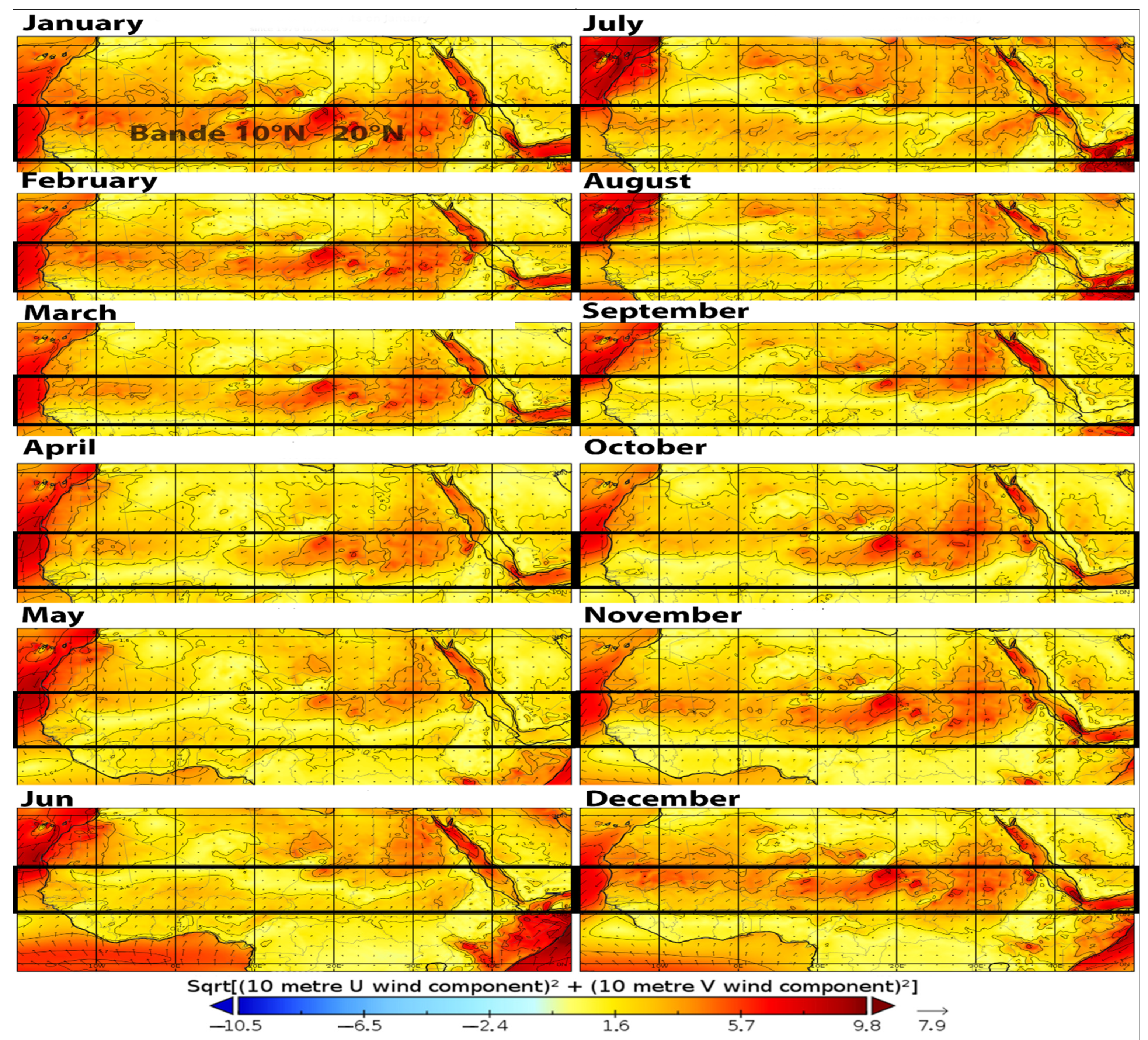
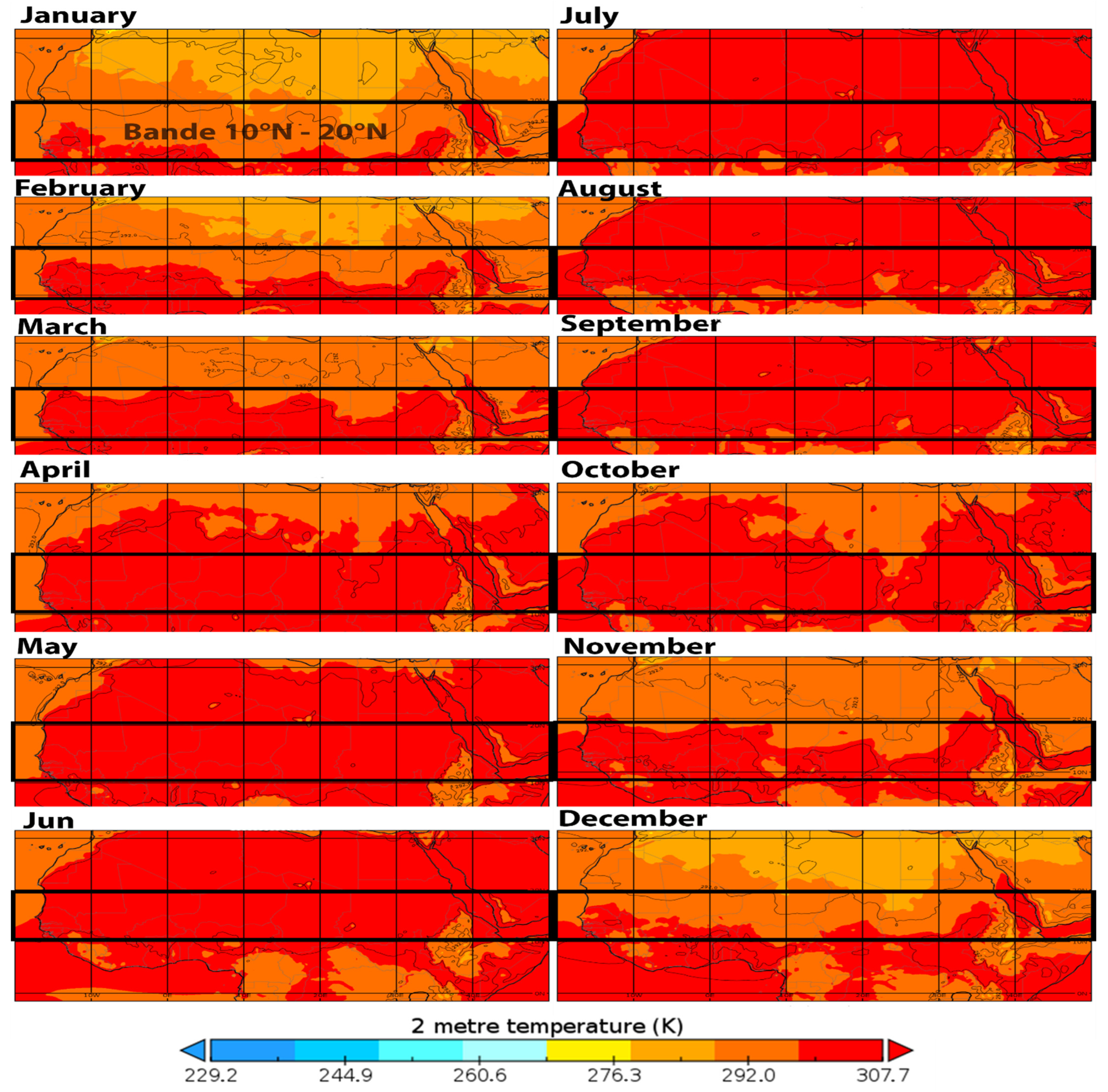
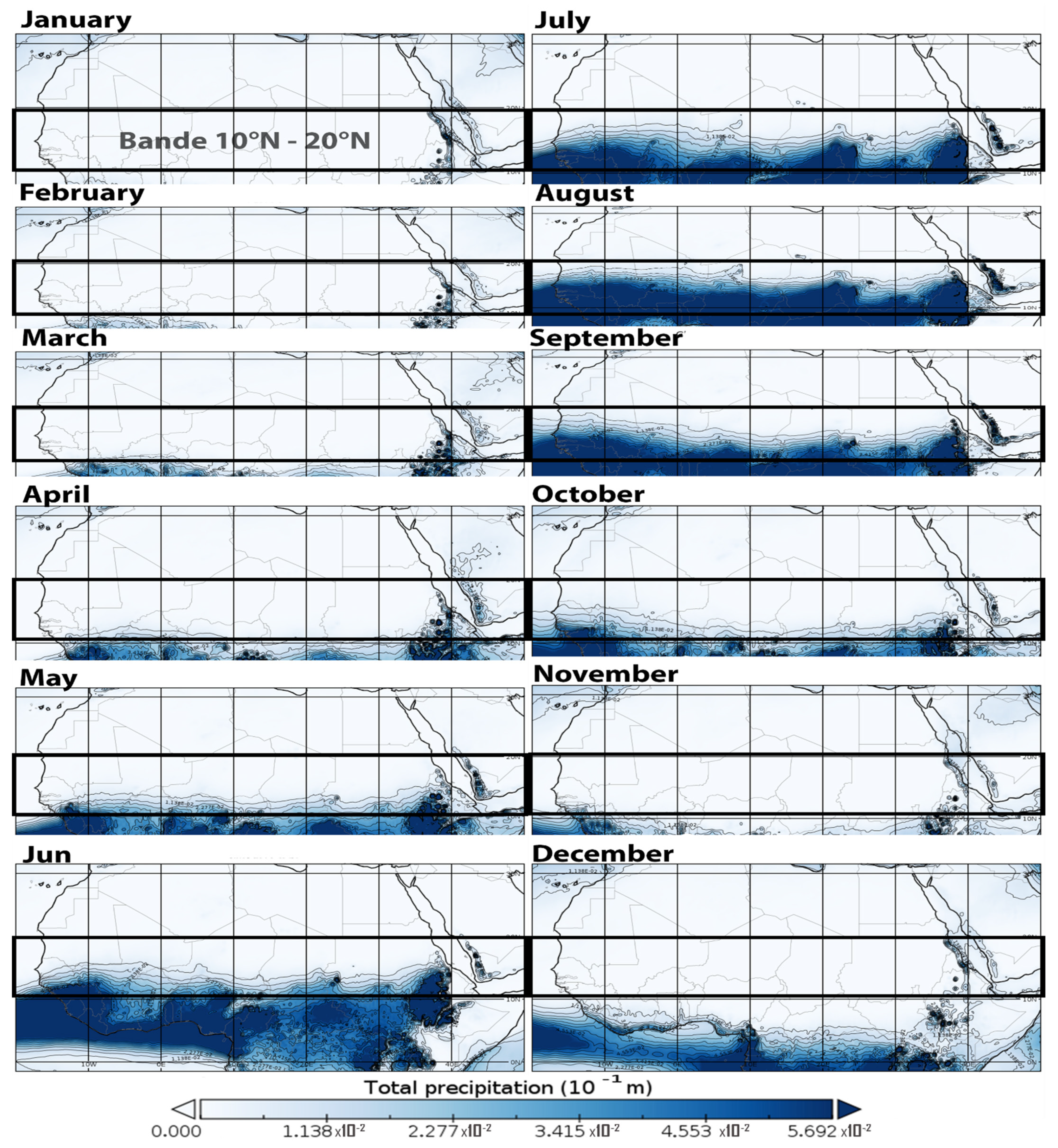


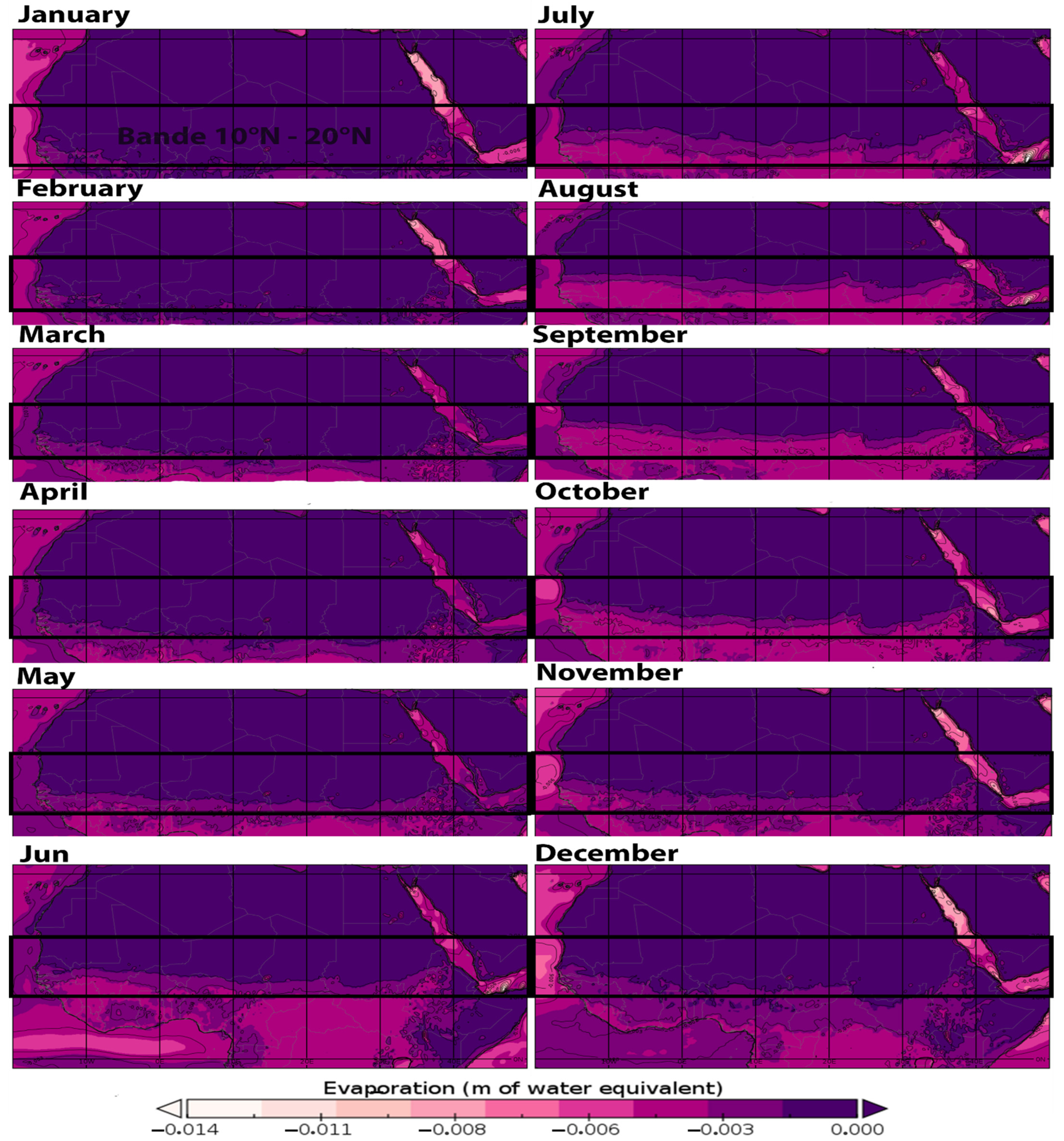
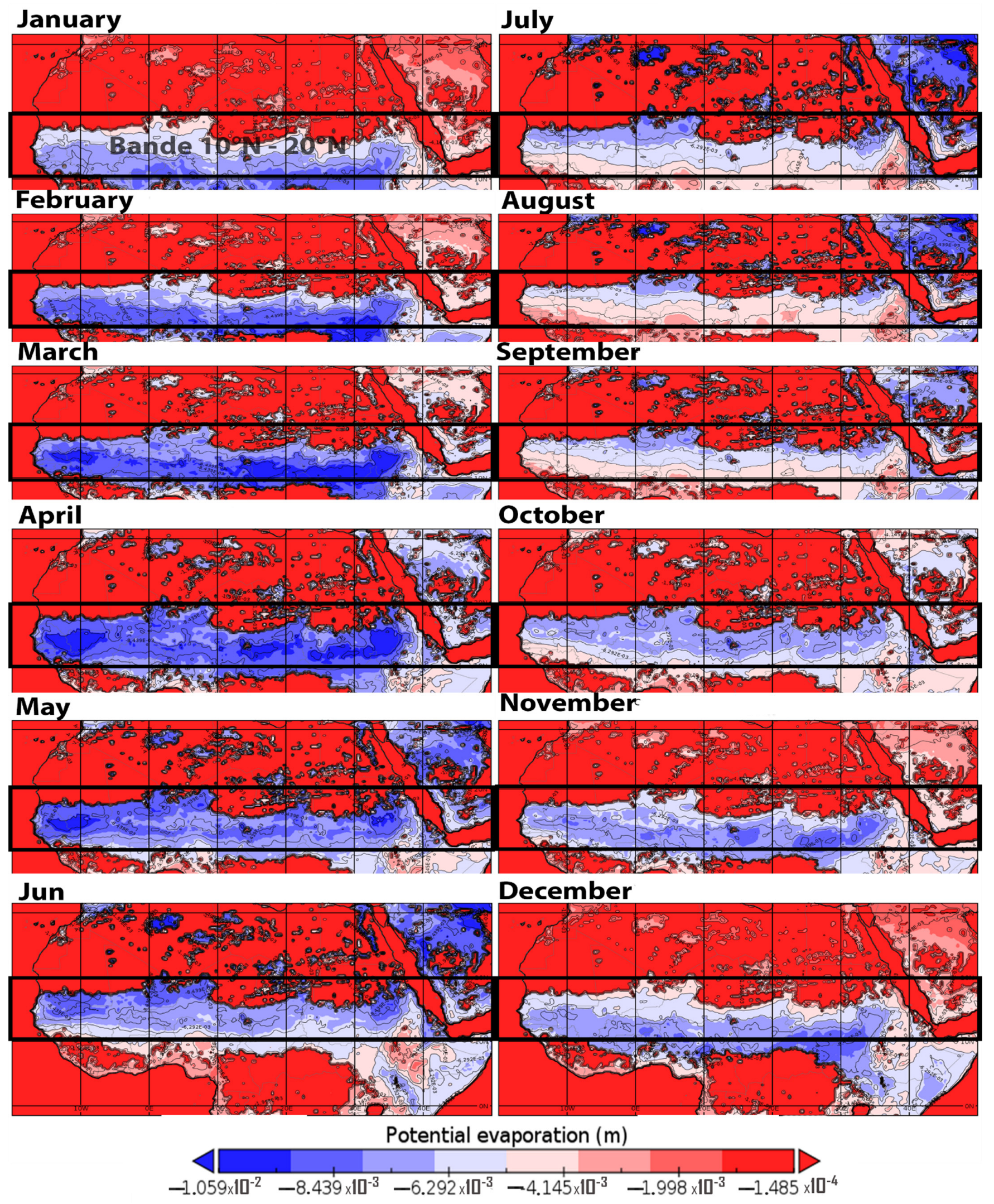

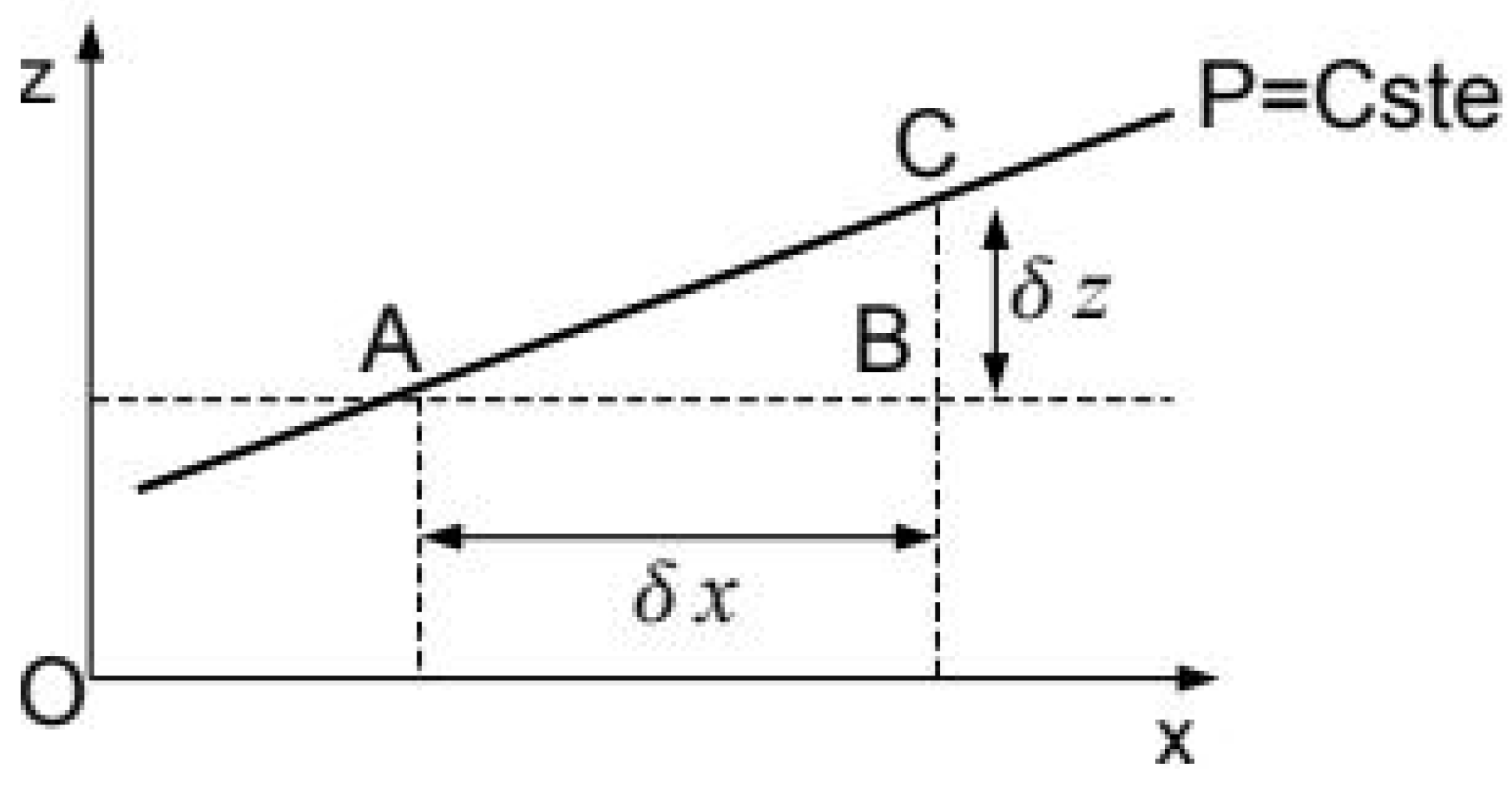
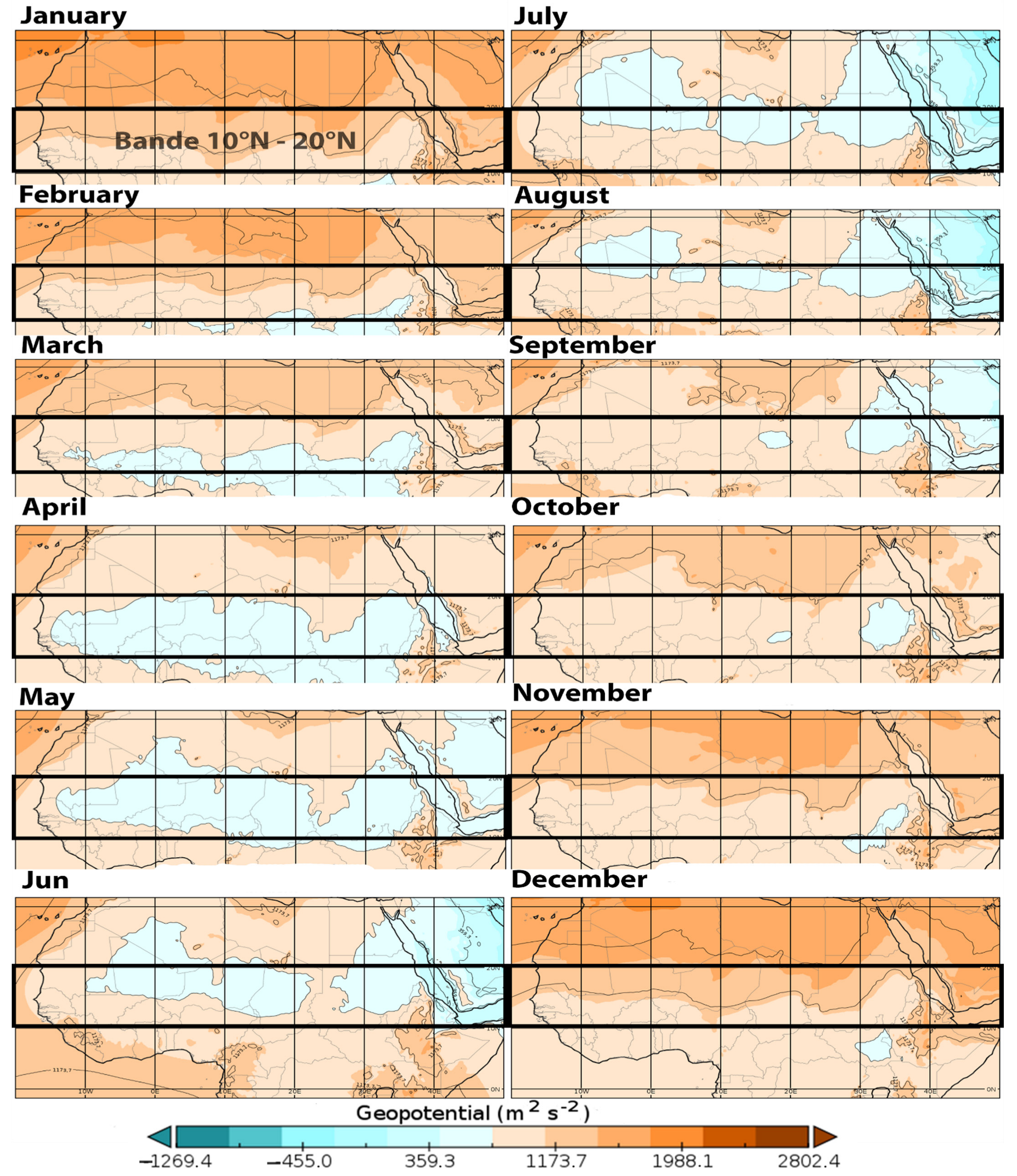
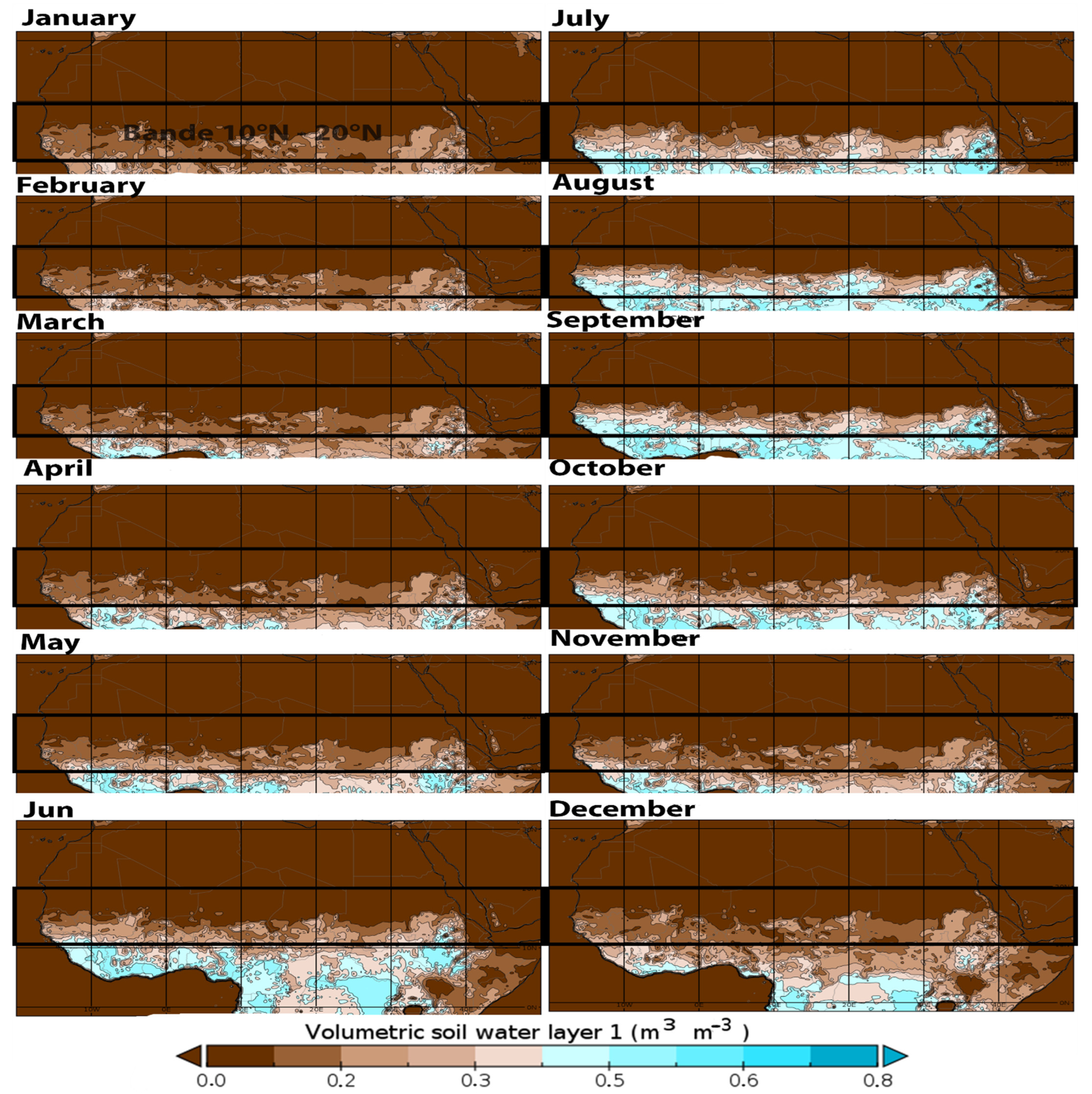
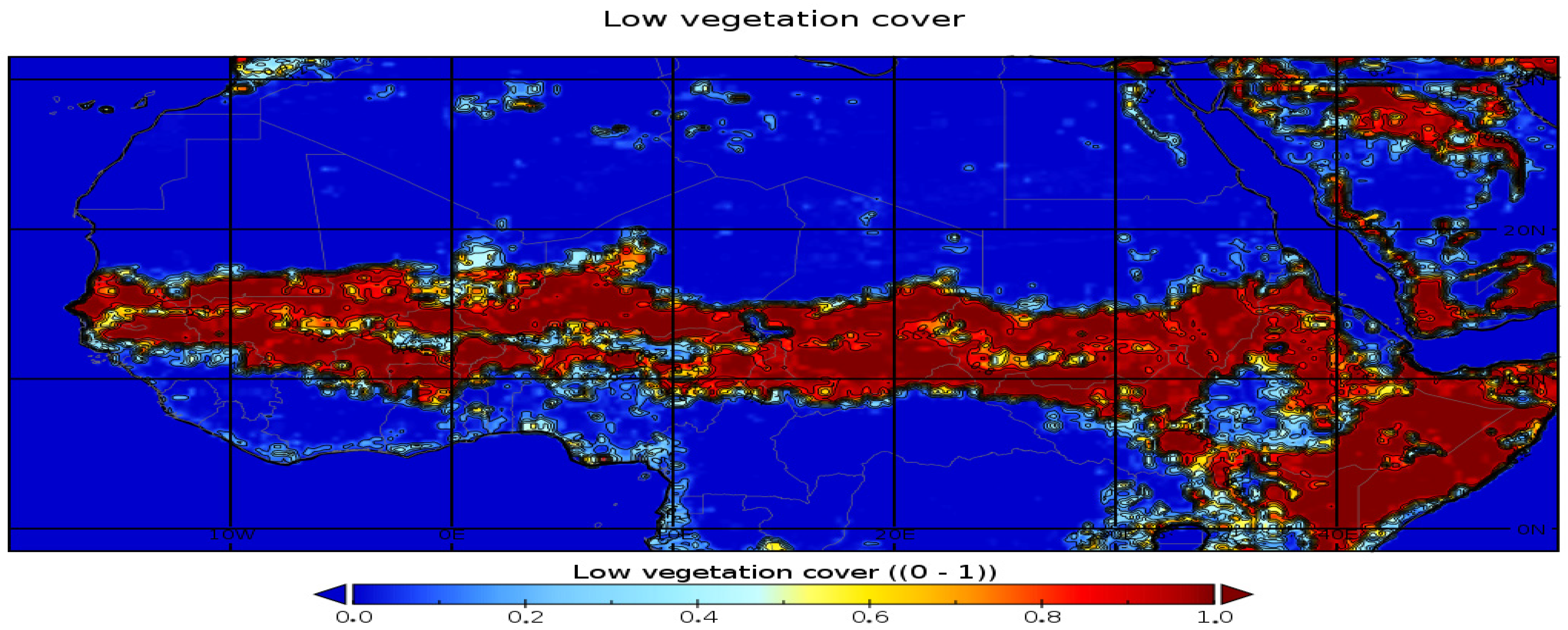
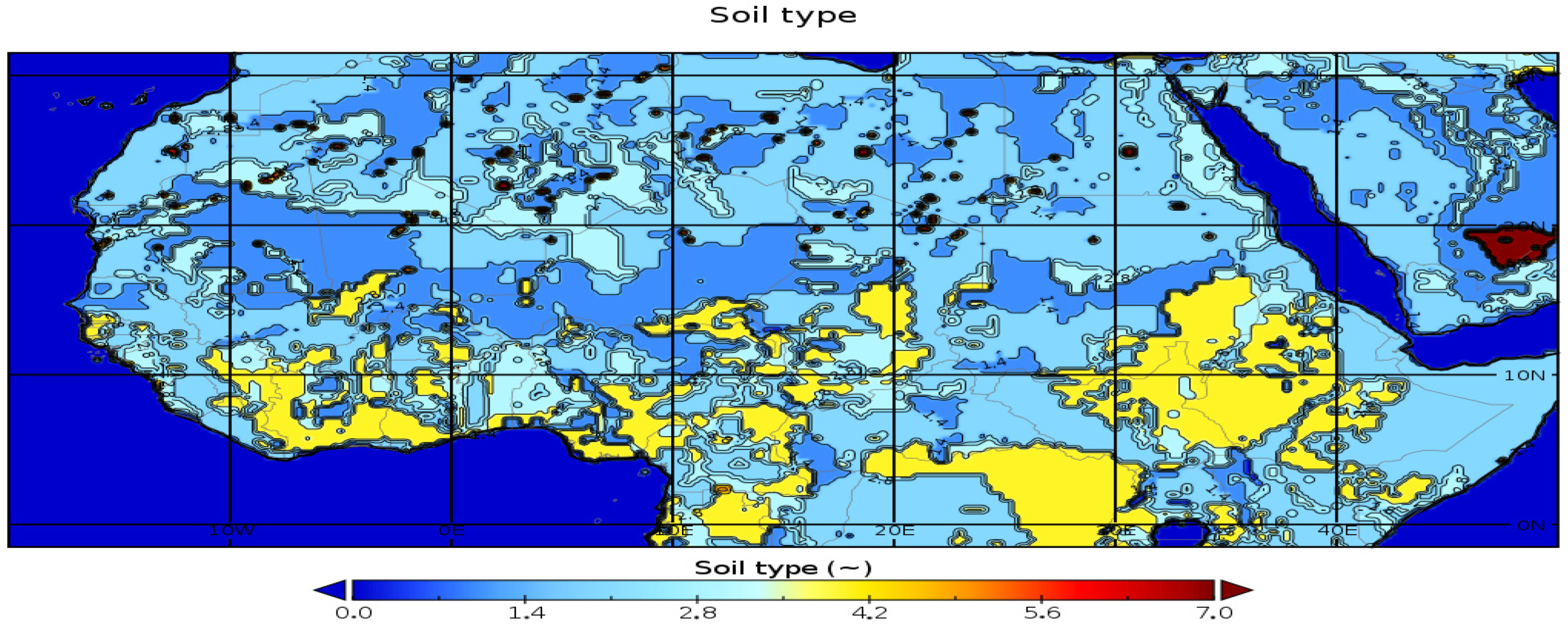
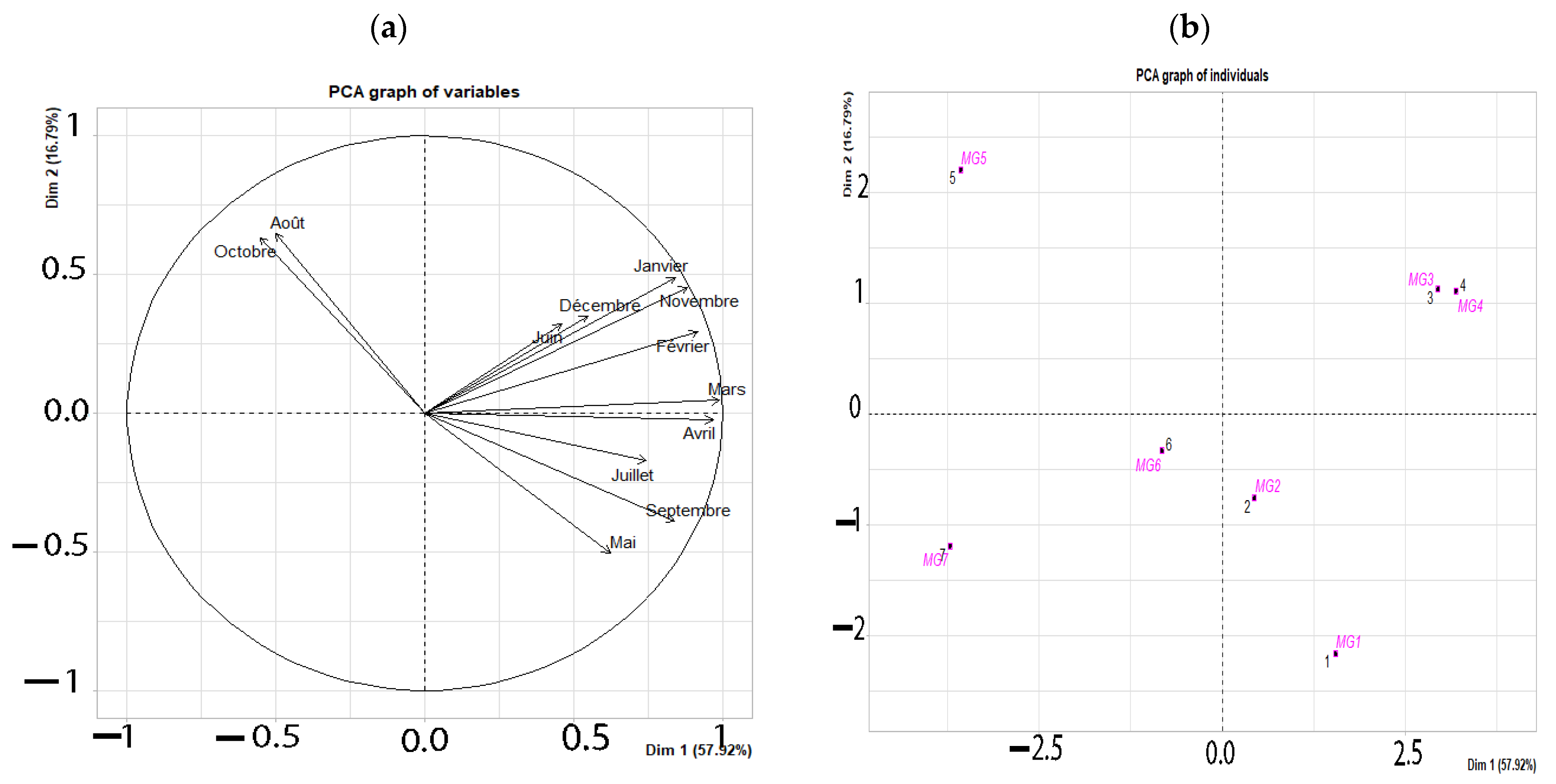
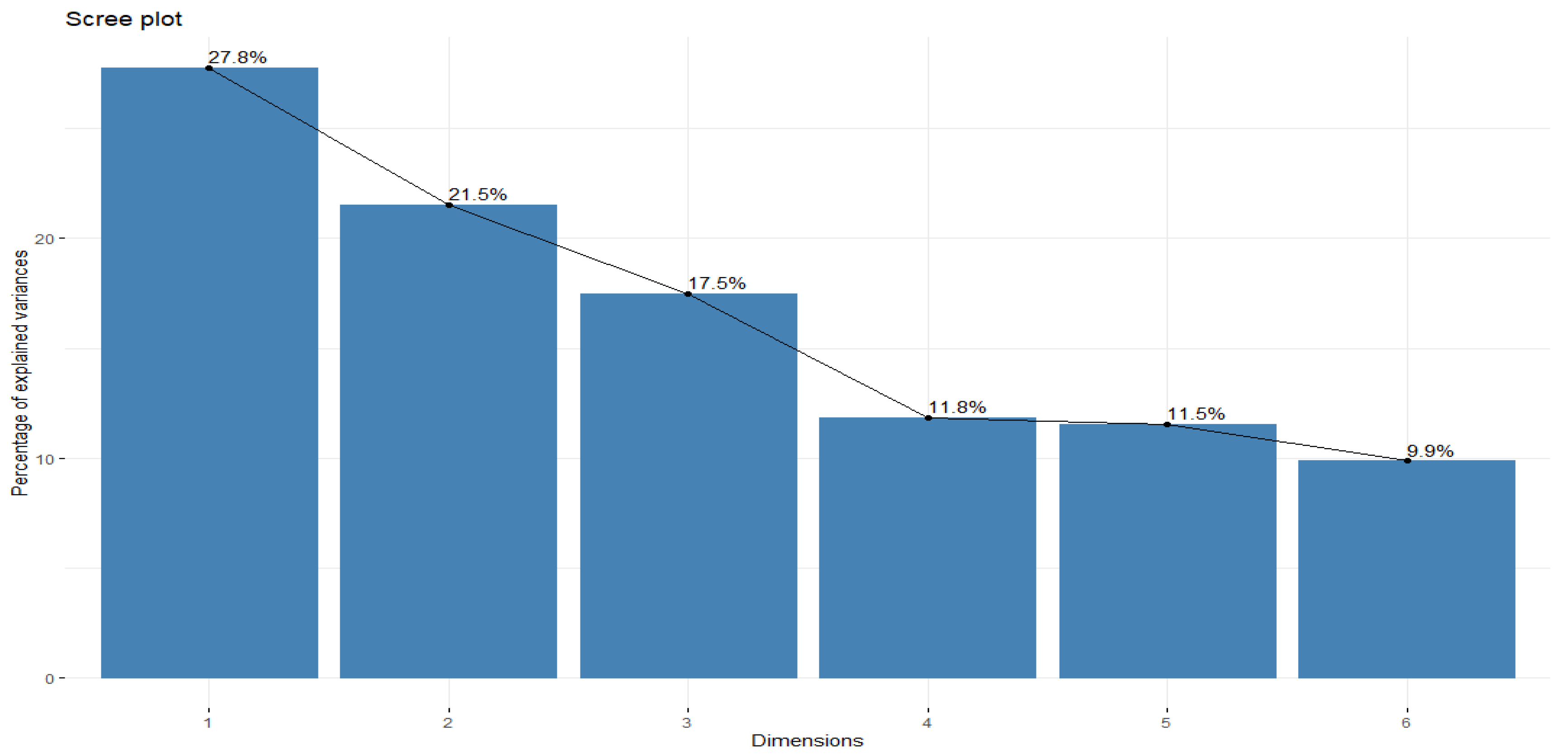
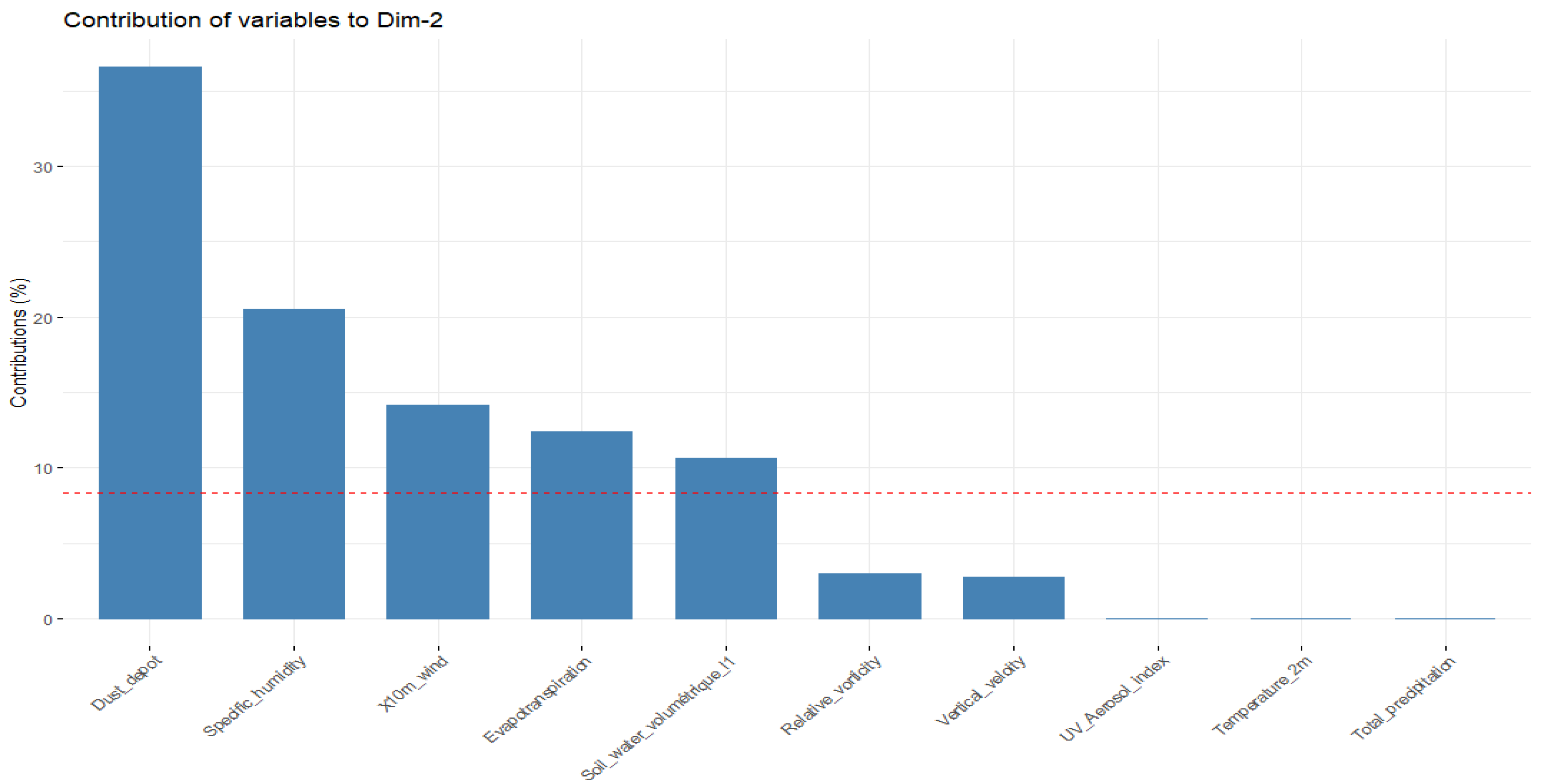

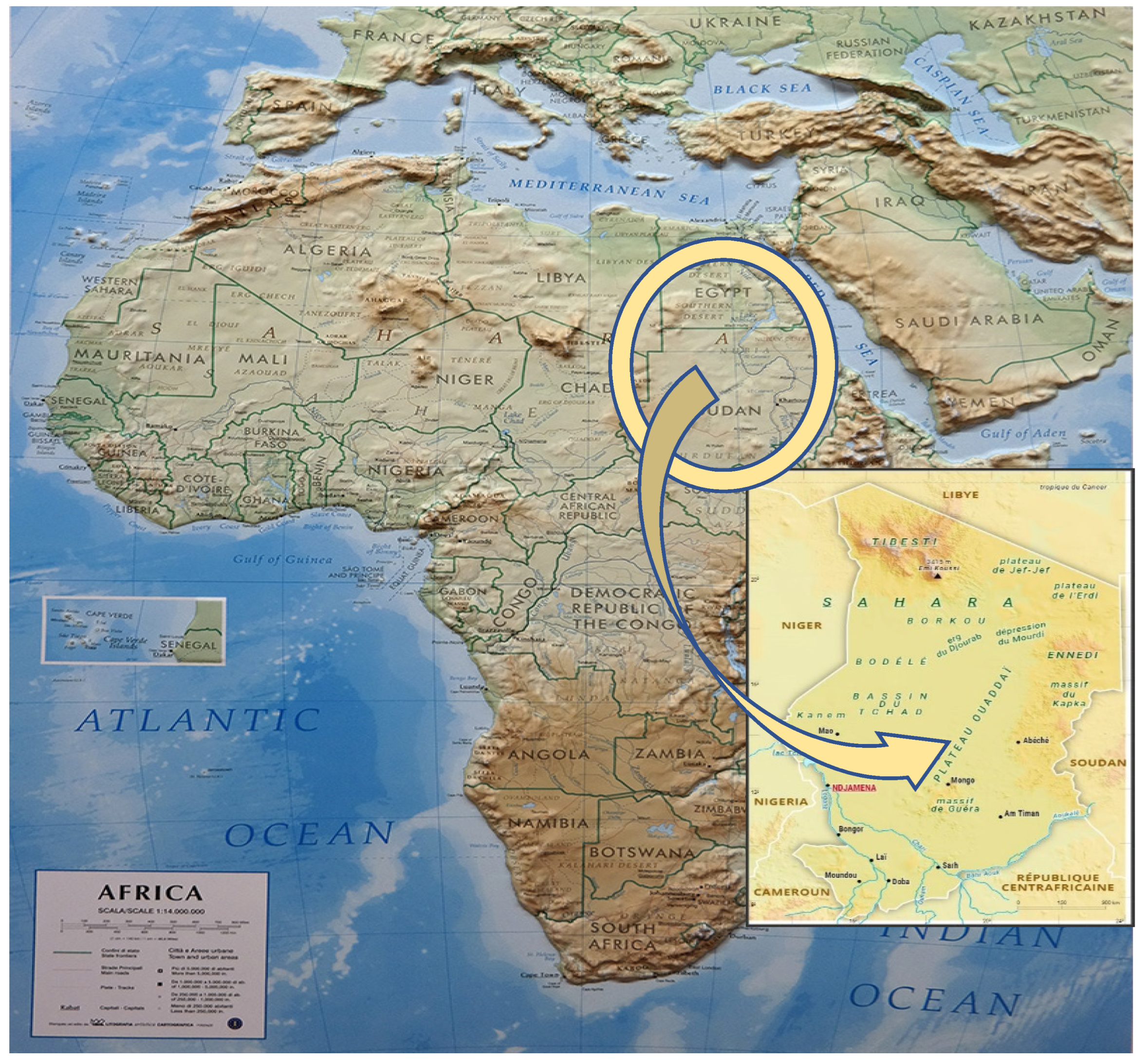

| Soil Types | Volumetric Properties |
|---|---|
| Sandy soil | 0.4 < ϴs < 0.5 m3m−3 |
| Silty-sandy soil | 0.3 < ϴs < 0.4 m3m−3 |
| Clay soil | 0.6 m3m−3 |
| Soil Indices | Size of the Sand Grains |
|---|---|
| 1 | Rough |
| 2 | Medium |
| 3 | Medium fine |
| 4 | Fine |
| 5 | Very fine |
| 6 | Organic |
| 7 | Tropical organic |
| 0 | Indicates a non-terrestrial point. This parameter does not vary over time. |
Publisher’s Note: MDPI stays neutral with regard to jurisdictional claims in published maps and institutional affiliations. |
© 2022 by the authors. Licensee MDPI, Basel, Switzerland. This article is an open access article distributed under the terms and conditions of the Creative Commons Attribution (CC BY) license (https://creativecommons.org/licenses/by/4.0/).
Share and Cite
Diop, A.B.; Wade, M.; Sy, A.; Mbodji, A.K.; Farota, A.K.; Deme, E.h.; Niang, B.; Diop, B.; Gaye, A.T.; Diakhaby, A. Atmospheric Conditions for Uplift and Dust Transport in the Latitudinal 10° North–20° North Band in Africa. Atmosphere 2022, 13, 1083. https://doi.org/10.3390/atmos13071083
Diop AB, Wade M, Sy A, Mbodji AK, Farota AK, Deme Eh, Niang B, Diop B, Gaye AT, Diakhaby A. Atmospheric Conditions for Uplift and Dust Transport in the Latitudinal 10° North–20° North Band in Africa. Atmosphere. 2022; 13(7):1083. https://doi.org/10.3390/atmos13071083
Chicago/Turabian StyleDiop, Abdoulaye Bouya, Malick Wade, Abdoulaye Sy, Abdoul Karim Mbodji, Abdou Karim Farota, El hadji Deme, Babacar Niang, Bouya Diop, Amadou Thierno Gaye, and Aboubakary Diakhaby. 2022. "Atmospheric Conditions for Uplift and Dust Transport in the Latitudinal 10° North–20° North Band in Africa" Atmosphere 13, no. 7: 1083. https://doi.org/10.3390/atmos13071083
APA StyleDiop, A. B., Wade, M., Sy, A., Mbodji, A. K., Farota, A. K., Deme, E. h., Niang, B., Diop, B., Gaye, A. T., & Diakhaby, A. (2022). Atmospheric Conditions for Uplift and Dust Transport in the Latitudinal 10° North–20° North Band in Africa. Atmosphere, 13(7), 1083. https://doi.org/10.3390/atmos13071083







